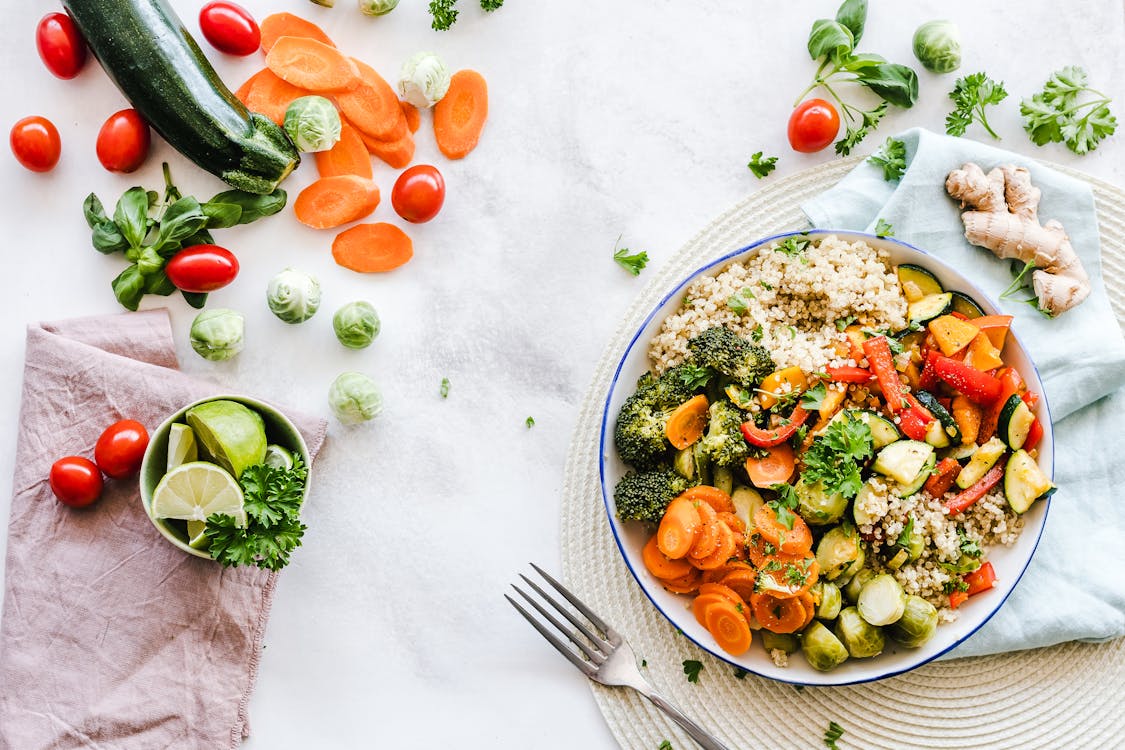Table of Contents
- Decoding the Science: What ARE Antioxidants and Free Radicals?
- Why are Antioxidants EXTRA Important for Children?
- The Antioxidant All-Stars: Key Nutrients and Food Sources
- The Food-First Philosophy: Whole Foods vs. Supplements
- Actionable Insights: Practical Tips to Boost Your Child’s Antioxidant Intake
- Beyond the Plate: Other Factors Influencing Oxidative Balance
- Conclusion: Empowering Your Child’s Health Through Antioxidants
Tiny Superheroes: Unlocking the Power of Antioxidants for Your Child’s Health
Imagine tiny superheroes patrolling your child’s body, constantly fighting off invisible villains. Sounds like a cool comic book, right? Well, it’s actually happening! These superheroes are called antioxidants, and the villains are unstable molecules known as free radicals. As parents, we all want the absolute best for our children – vibrant energy, strong immune systems, sharp minds, and a foundation for a long, healthy life. Understanding the crucial role of antioxidants in children’s health is a powerful key to unlocking that potential.
In a world brimming with processed foods, environmental pollutants, and the everyday stresses of growing up, our kids’ bodies are constantly under attack. This is where antioxidants step in, acting as a vital defense force. But what exactly are they, why are they so important specifically during childhood, and how can we ensure our little ones are getting enough of these protective compounds? Get ready to dive deep into the fascinating world of antioxidants and discover practical ways to supercharge your child’s well-being from the inside out. This isn’t just about ‘eating your greens’; it’s about building a resilient, thriving future for your child, one colourful bite at a time.

Decoding the Science: What ARE Antioxidants and Free Radicals?
Before we explore why antioxidants are VIPs for kids, let’s break down the science in simple terms. Our bodies, including our children’s rapidly growing ones, are constantly performing millions of chemical reactions. Think of it like a busy factory. During these processes, especially when converting food into energy (metabolism), unstable molecules called free radicals are naturally produced.
Free radicals aren’t inherently evil; they have some useful functions in small amounts, like helping the immune system fight pathogens. However, they are ‘unstable’ because they are missing an electron. Like a lonely person desperate for a partner, they aggressively try to steal an electron from nearby healthy molecules (proteins, fats, even DNA). When they succeed, they damage that molecule, turning *it* into a free radical, starting a damaging chain reaction.
This chain reaction is called oxidative stress. Think of it like rust forming on metal – it’s a gradual process of damage caused by oxidation. Factors like pollution, processed foods, sugary diets, intense physical activity (yes, even playtime!), illness, and stress can increase the production of free radicals, potentially overwhelming the body’s natural defenses.
Enter the Heroes: Antioxidants to the Rescue!
This is where our superheroes, the antioxidants, make their grand entrance. Antioxidants are special molecules that have electrons to spare. They generously donate an electron to a free radical, stabilizing it and stopping the damaging chain reaction *without* becoming unstable themselves. They effectively neutralize the threat.
Our bodies produce some antioxidants naturally, but we primarily get them from the foods we eat, particularly fruits, vegetables, nuts, seeds, and whole grains. There are hundreds, possibly thousands, of different substances that act as antioxidants, including familiar names like:
- Vitamin C: The water-soluble classic found in citrus fruits, berries, kiwi, and bell peppers.
- Vitamin E: A fat-soluble protector found in nuts, seeds, vegetable oils, and leafy greens.
- Beta-carotene: Converted to Vitamin A in the body, famous for its presence in carrots, sweet potatoes, and mangoes.
- Selenium: A trace mineral crucial for antioxidant enzyme function, found in Brazil nuts, seafood, and eggs.
- Zinc: Another essential mineral involved in antioxidant defense systems, present in meat, shellfish, legumes, and seeds.
- Phytochemicals: These are powerful plant compounds that give fruits and veggies their vibrant colours and potent health benefits. Examples include flavonoids (in berries, apples, onions), lycopene (in tomatoes, watermelon), lutein and zeaxanthin (in leafy greens, egg yolks), and polyphenols (in grapes, tea, cocoa).
Why are Antioxidants EXTRA Important for Children?
Childhood is a period of incredible growth and development. Cells are dividing rapidly, organs are maturing, and systems are being fine-tuned. This intense biological activity makes children uniquely vulnerable to oxidative stress, while simultaneously highlighting their need for robust antioxidant protection.

Supporting Rapid Growth and Development
Think about how quickly babies turn into toddlers, and toddlers into school-aged kids. This rapid growth requires a huge amount of energy and metabolic activity, naturally generating more free radicals as a byproduct. Adequate antioxidants for kids are essential to counterbalance this increased production, protecting developing tissues and ensuring growth proceeds smoothly without excessive cellular damage.
Building a Strong Immune System
Kids are notorious for picking up colds and bugs, especially once they start daycare or school. Their immune systems are still learning and developing. Oxidative stress can weaken immune function, making children more susceptible to infections. Antioxidants, particularly Vitamin C, Zinc, and Selenium, play a direct role in supporting various immune cells, helping them function optimally to fight off invaders. A diet rich in antioxidants can contribute to fewer sick days and faster recovery times.
Fueling Brain Development and Cognitive Function
A child’s brain undergoes phenomenal development, especially in the early years. Brain tissue is rich in fatty acids, which are particularly vulnerable to oxidative damage. Oxidative stress has been linked to cognitive deficits and neurodevelopmental issues. Antioxidants, including Vitamin E and certain phytochemicals found in berries (often called ‘brain berries’), help protect delicate brain cells and support healthy nerve function, potentially contributing to better learning, memory, and focus. Ensuring optimal pediatric nutrition rich in these compounds is vital.
Protecting Precious Eyesight
Good vision is crucial for learning and exploring the world. Certain antioxidants, namely lutein and zeaxanthin, accumulate in the retina of the eye. They act like internal sunglasses, filtering harmful blue light and protecting eye cells from oxidative damage caused by UV exposure. Foods rich in these antioxidants, like spinach, kale, corn, and egg yolks, contribute to long-term eye health.
Shielding Against Environmental Assaults
Children are often exposed to higher levels of environmental toxins relative to their body size compared to adults. Air pollution, pesticides on food, chemicals in household products – these all contribute to the free radical load. A strong antioxidant defense system helps the body cope with and neutralize these external threats, minimizing potential damage.
Laying the Foundation for Lifelong Health
The habits and nutritional foundations established in childhood can have a lasting impact. Chronic oxidative stress is implicated in the development of many adult diseases, including heart disease, diabetes, and certain cancers. By ensuring children have ample antioxidant protection early on, we may help reduce their risk of developing these conditions later in life. It’s a long-term investment in their future well-being.
The Antioxidant All-Stars: Key Nutrients and Food Sources
Okay, we know antioxidants are important. But which ones should we focus on, and where can we find them? The good news is that nature packages these powerhouses perfectly in delicious whole foods. Aiming for variety is key!

Vitamin C: The Immunity Booster
- Why it’s great: Essential for immune cell function, collagen production (for healthy skin, gums, and wound healing), and acts as a potent antioxidant in watery parts of the body.
- Find it here: Oranges, strawberries, kiwi, bell peppers (especially red), broccoli, tomatoes, mangoes.
Vitamin E: The Fat-Soluble Protector
- Why it’s great: Protects cell membranes (which are made of fats) from oxidative damage. Important for skin health, eye health, and immune function.
- Find it here: Almonds, sunflower seeds, hazelnuts, spinach, broccoli, avocado, vegetable oils (like sunflower or safflower oil – use sparingly).
Beta-Carotene & Vitamin A: The Vision Guardians
- Why it’s great: Beta-carotene is converted to Vitamin A, crucial for vision (especially night vision), immune function, skin health, and cell growth. Beta-carotene itself acts as an antioxidant.
- Find it here: Carrots, sweet potatoes, pumpkin, butternut squash, spinach, kale, mangoes, apricots. (Look for bright orange, yellow, and dark green!).
Selenium: The Enzyme Helper
- Why it’s great: A trace mineral that’s a key component of powerful antioxidant enzymes (like glutathione peroxidase) that protect against oxidative damage. Also vital for thyroid function and immunity.
- Find it here: Brazil nuts (just 1-2 can meet daily needs!), tuna, sardines, halibut, eggs, chicken, brown rice.
Zinc: The Multi-Tasker
- Why it’s great: Involved in hundreds of enzyme reactions, including those part of the antioxidant defense system. Crucial for growth, immune function, wound healing, and taste/smell.
- Find it here: Oysters, red meat, poultry, beans, nuts (cashews, almonds), pumpkin seeds, fortified cereals.
Phytochemicals: The Colourful Powerhouses
- Why they’re great: This diverse group of plant compounds offers a vast array of antioxidant and anti-inflammatory benefits. They often work synergistically (better together!).
- Find them here: Think ‘Eat the Rainbow’!
- Red: Lycopene (tomatoes, watermelon, pink grapefruit)
- Orange/Yellow: Carotenoids like beta-carotene (carrots, sweet potatoes, peppers)
- Green: Lutein, zeaxanthin, sulforaphane, indoles (spinach, kale, broccoli, Brussels sprouts)
- Blue/Purple: Anthocyanins (blueberries, blackberries, eggplant, plums, red cabbage)
- White/Tan: Allicin, quercetin (garlic, onions, mushrooms, cauliflower)
The Food-First Philosophy: Whole Foods vs. Supplements
With all this talk about specific vitamins and minerals, it might be tempting to reach for a children’s multivitamin or antioxidant supplement. However, most pediatricians and nutrition experts strongly advocate a ‘food first’ approach.
Why? Whole foods contain a complex matrix of nutrients – vitamins, minerals, fiber, and thousands of phytochemicals – that work together in ways scientists are still discovering. This synergy is often lost in isolated supplements. Furthermore, high doses of certain antioxidant supplements (especially fat-soluble ones like Vitamin E and A) can be harmful and may even interfere with the body’s natural balance. Relying on supplements can also create a false sense of security, potentially overshadowing the importance of a genuinely healthy diet for kids.
Supplements *may* be necessary in specific situations (e.g., diagnosed deficiencies, certain medical conditions, extremely picky eaters under a doctor’s guidance), but they should *complement*, not replace, a diet rich in antioxidant-packed whole foods. Always consult your pediatrician or a registered dietitian before giving your child any supplements.
Actionable Insights: Practical Tips to Boost Your Child’s Antioxidant Intake
Knowing is half the battle, but putting it into practice is where the magic happens! Getting kids, especially picky eaters, to embrace antioxidant-rich foods can feel like a challenge, but here are some parent-tested strategies:

- Embrace the Rainbow: Make it a game! Challenge your kids to eat foods of every colour throughout the week. Use a chart, offer small rewards (non-food related!), and talk about the ‘superpowers’ each colour gives them. This encourages variety, ensuring a broader range of antioxidants.
- Smoothie Power: Smoothies are fantastic vehicles for sneaking in goodness. Blend spinach or kale (you often can’t taste it!), berries, a banana, maybe some flax or chia seeds (more antioxidants and omega-3s!), and yogurt or milk.
- Master the Hidden Veggie: Finely grate carrots or zucchini into pasta sauces, meatballs, or muffins. Pureed pumpkin or sweet potato can blend into mac and cheese or pancake batter.
- Smart Snacking: Ditch the processed snacks. Offer fruit slices with nut butter, veggie sticks (peppers, carrots, cucumbers) with hummus, a small handful of mixed nuts and seeds (age-appropriately to avoid choking hazards), berries with yogurt, or air-popped popcorn (a whole grain!).
- Get Kids Involved: Take them grocery shopping and let them pick out a new colourful fruit or vegetable to try. Have them help wash produce, tear lettuce, or stir ingredients (age-appropriately). They’re more likely to eat what they helped prepare.
- Make Food Fun: Use cookie cutters to make shapes out of fruits, vegetables, or sandwiches. Arrange food on the plate to look like a smiley face or a colourful pattern. Serve veggies with a healthy dip they love.
- Lead by Example: Let your kids see YOU enjoying a variety of colourful, healthy foods. Your eating habits are a powerful influence.
- Patience and Persistence: Don’t get discouraged if your child rejects a new food. It can take multiple exposures (10-15 times or more!) for a child to accept it. Offer small portions without pressure.
- Focus on Whole Grains: Swap white bread, pasta, and rice for their whole-grain counterparts (whole wheat bread, brown rice, quinoa, oats). Whole grains provide antioxidants, fiber, and essential nutrients.
- Limit the Bad Guys: Reduce intake of sugary drinks, processed snacks, fried foods, and excessive red/processed meats, as these can increase oxidative stress and offer little nutritional value.
Beyond the Plate: Other Factors Influencing Oxidative Balance
While diet is paramount, other lifestyle factors play a role in managing oxidative stress in children:
- Adequate Sleep: Sleep is when the body repairs and regenerates. Chronic lack of sleep can increase oxidative stress markers. Ensure your child gets age-appropriate amounts of quality sleep.
- Regular Physical Activity: While intense exercise generates free radicals *during* the activity, regular moderate exercise actually strengthens the body’s antioxidant defense systems over time. Encourage active play!
- Stress Management: Chronic stress can contribute to oxidative stress. While eliminating all stress isn’t possible, helping children develop coping mechanisms, ensuring downtime, and providing a supportive environment is beneficial.
- Minimizing Toxin Exposure: Choose organic produce when possible (especially for the ‘Dirty Dozen’), use natural cleaning products, ensure good ventilation at home, and avoid exposure to cigarette smoke.
Conclusion: Empowering Your Child’s Health Through Antioxidants
Antioxidants are more than just a buzzword; they are fundamental players in ensuring our children grow, develop, and thrive. These powerful compounds, abundant in colourful fruits, vegetables, nuts, seeds, and whole grains, act as cellular bodyguards, neutralizing harmful free radicals and reducing oxidative stress. By protecting against cellular damage, antioxidants support everything from rapid growth and robust immune system support children need, to healthy brain development children require for learning, sharp vision, and establishing a foundation for long-term health.
Remember, the most effective way to harness the power of antioxidants is through a varied, whole-foods diet – truly encouraging your child to ‘eat the rainbow’. While supplements have their place in specific, medically guided situations, they cannot replicate the complex symphony of nutrients found in real food. Making small, consistent changes – introducing one new colourful food at a time, involving kids in the kitchen, making healthy snacks readily available – can significantly boost their antioxidant intake.
Investing in your child’s antioxidant defense system today is an investment in their vibrant energy, resilience against illness, and overall well-being, both now and for years to come. So, fill those plates with colour, make mealtime fun, and empower your little ones with the superhero strength of antioxidants!



